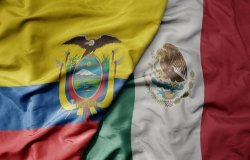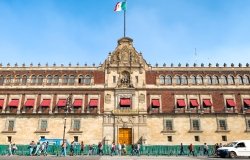Combating Corruption

Latin America has endured the scourge of corruption for decades, which has been detrimental to economic development, governance, and human rights. However, in the last five years, a great deal has changed. According to the Americas Society and Council of the Americas (AS/COA), the investigations into the Lava Jato case (Operation Car Wash) in Brazil and the La Línea corruption case in Guatemala have sparked the “systemic change” that is confronting political and economic impunity at the highest levels.
In order to compare the realities of various countries using public information, AS/COA launched its first Capacity to Combat Corruption Index (CCC) this week. The index evaluates the eight countries that account for nearly 90% of the region’s GDP. Instead of measuring perceived levels of corruption or the cost of corruption, the CCC measures the capacity of each country to uncover, punish, and deter corruption based on three categories: 1) legal capacity, 2) democracy and political institutions, and 3) civil society, media, and the private sector.
The index paints a less than flattering portrait of Mexico. Scoring 4.65/10, we occupy the 6th slot, just above Guatemala and Venezuela. The highest-ranking countries are Chile (6.66), Brazil, Colombia, Argentina and Peru. The lowest-ranking countries are Guatemala and Venezuela (1.71).
Regarding Mexico, the study highlights a “lack of progress in combating corruption.” Key areas of concern regarding legal capacity are: the weakness of a judicial system that is “prone to political meddling,” the incomplete implementation of a new accusatory judicial system, and the lack of substantial results from the new anti-corruption attorney general. Regarding democracy and political institutions, the report states “enforceability of anti-corruption legislation remains deficient compared to other countries, while corruption cases investigated by authorities are often seen as politicized.”
In contrast, anti-corruption promotion in Mexico has come from “outside of government.” Civil society has pushed for accountability and anti-corruption legislation. In turn, improvements in investigative journalism have unveiled some of the most notorious corruption cases.
Beyond having strong legal capacities, Chile, Brazil, Colombia, and Argentina all demonstrate strong political institutions and civil society.
The authors of the CCC maintain that there is no foolproof instruction manual, nor is there a simple solution to combat corruption. The advances made in ani-corruption promotion are the result of the joint efforts made by government, the private sector, and civil society. In any case, impunity is more likely to occur at the lower end of the scale.
This article was originally published in Spanish on El Heraldo de México...
About the Author


Mexico Institute
The Mexico Institute seeks to improve understanding, communication, and cooperation between Mexico and the United States by promoting original research, encouraging public discussion, and proposing policy options for enhancing the bilateral relationship. A binational Advisory Board, chaired by Luis Téllez and Earl Anthony Wayne, oversees the work of the Mexico Institute. Read more









